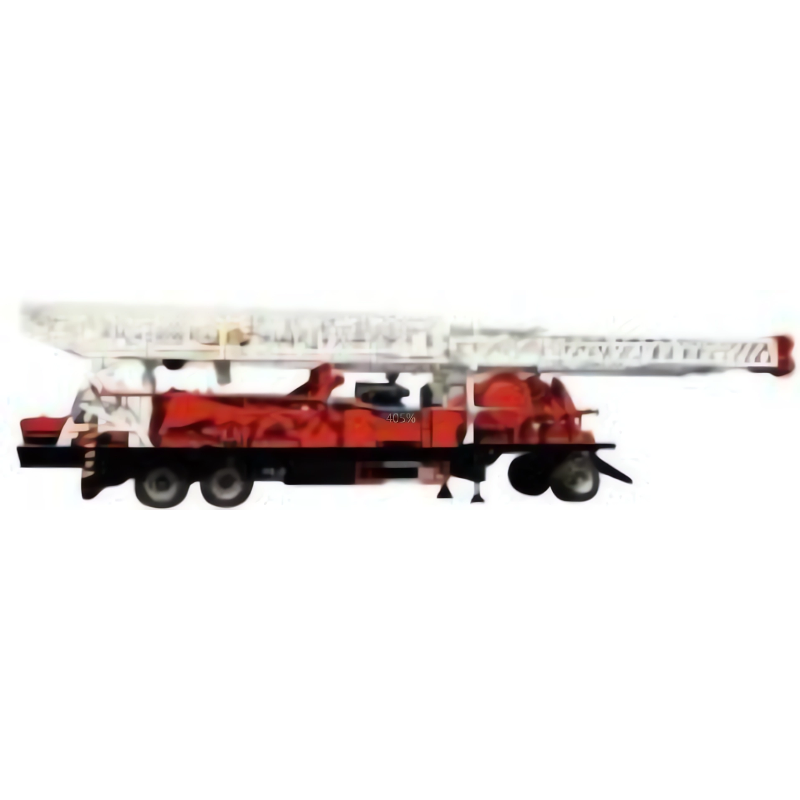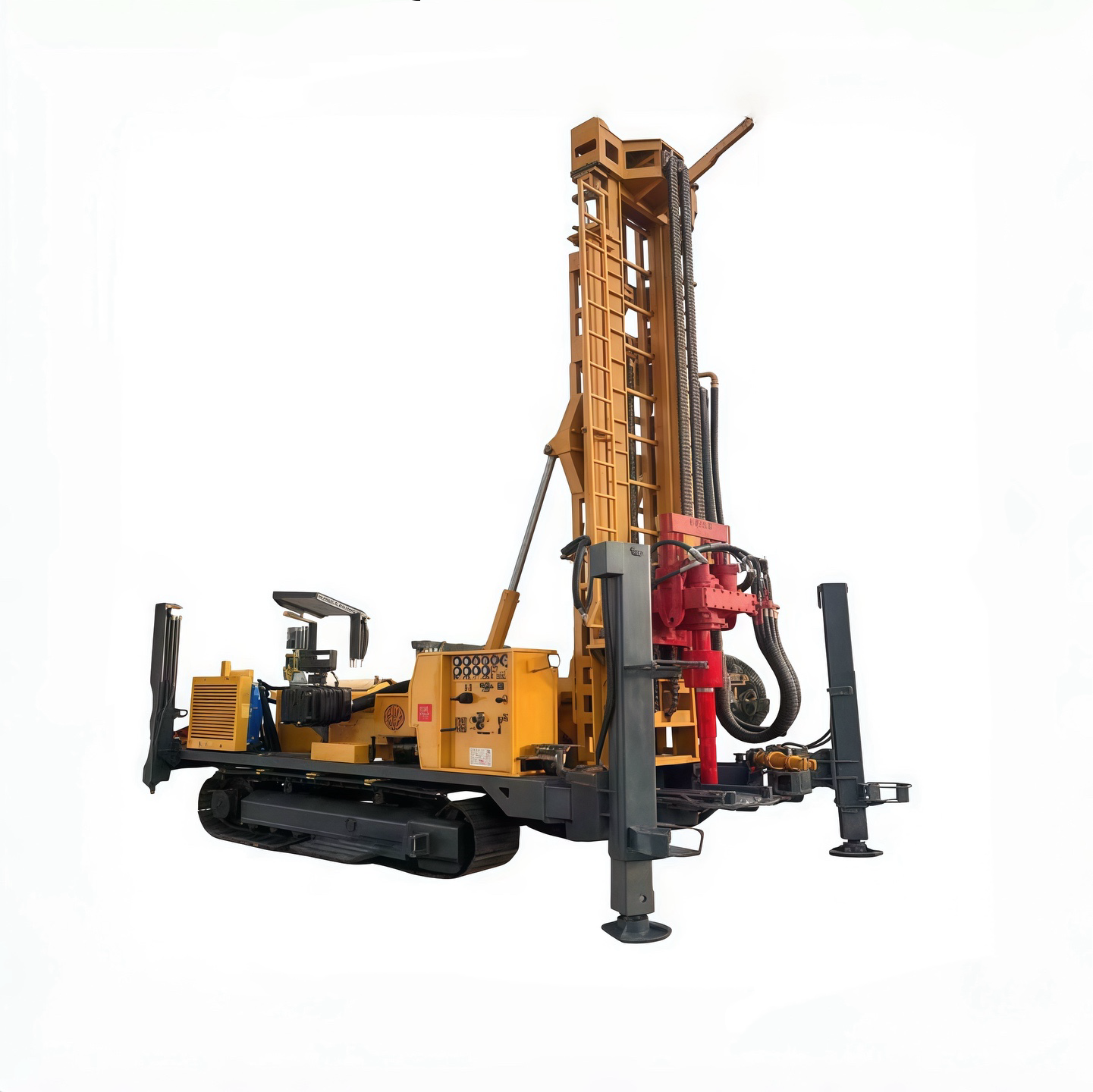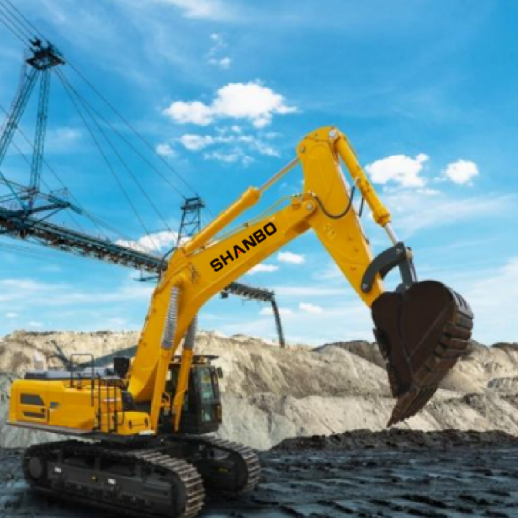Როგორ დაზოგოთ თანხები საშენ მანქანების პრევენციული რემონტით
Სამშენ ინდუსტრიაში სამუშაოს სიჩქარის გათვალისწინებით, მძიმე ტექნიკა — მაგალითად, ექსკავატორები, ბულდოზერები და უკანა მიმდევრობის მქონე ტექნიკა — ნებისმიერი პროექტის ძირის ქვას წარმოადგენს. მძიმე მანქანების მომსახურება აუცილებელია დროულად დასრულებისა და პროდუქტიულობის შესანარჩუნებლად, თუმცა მომსახურება ხშირად ხდება ფინანსური ბრუნვის მძიმე ბრუნვად. გამართვები შეიძლება უცებ გამოიწვიოს შეკეთების ხარჯები, დაკარგული დრო და პროექტის გადადება, რაც ყველა ერთად ამცირებს მოგებას.
Პრევენციული მომსახურება, რომელიც მანქანების მომსახურების პროაქტიულ მიდგომას წარმოადგენს, შეიძლება დიდი რაოდენობის თანხის დანახულებაში დაგეხმაროს, რადგან პრობლემებს დროულად ამოწმებს, სანამ ისინი მნიშვნელოვან ხარჯებად არ იქცევიან. ეს სტატია ახსნის, თუ როგორ ხორციელდება მშენებლობის ინდუსტრიისთვის მძიმე მანქანების პრევენციული შეკეთება, მისი სარგებელი და ნაბიჯ-ნაბიჯ ინსტრუქციები იმის შესახებ, თუ როგორ უნდა განახორციელოთ იგი წარმატებით, რათა შეინარჩუნოთ თქვენი მანქანების მუშაობა და თანხების დანახულება.
Პრევენციული მომსახურების გაგება
Პრევენციული მოვლა გულისხმობს რეგულარულ შემოწმებს, სერვისირებას და შეკეთებას სამშენ მანქანების მაქსიმალური მუშაობის უზრუნველყოფისთვის. პრობლემის გამო მომდევნო რეაქტიული მოვლის განსაზღვრით, პრევენციული მოვლა წინასწარ ამჩნევს შესაძლო პრობლემებს გამოყენების, ცვეთის მაჩვენებლების და მწარმობლის მითითებების საფუძველზე. რეგულარული შემოწმებისა და მცირე შეკეთების ჩატარებით შეგიძლიათ თავიდან აიცილოთ ძვირადღირებული გამართვები, გააგრძელოთ მანქანების სამუშაო ვადა და შეამციროთ ექსპლუატაციის ჯამური ხარჯები.
Კონცეფცია მარტივია: ინვესტირება ხდება დროსა და რესურსებში რეგულარული მოვლისთვის, რათა თავიდან აიცილოთ ავარიული შეკეთების ან მანქანების ჩანაცვლების ბევრად მაღალი ხარჯები. სამშენ კომპანიებისთვის, სადაც მანქანების შეჩერება შეიძლება შეაჩეროს მთელი პროექტი, ეს მიდგომა არა მხოლოდ ხარჯების შემცირების ზომაა, არამედ სტრატეგიული აუცილებლობა.
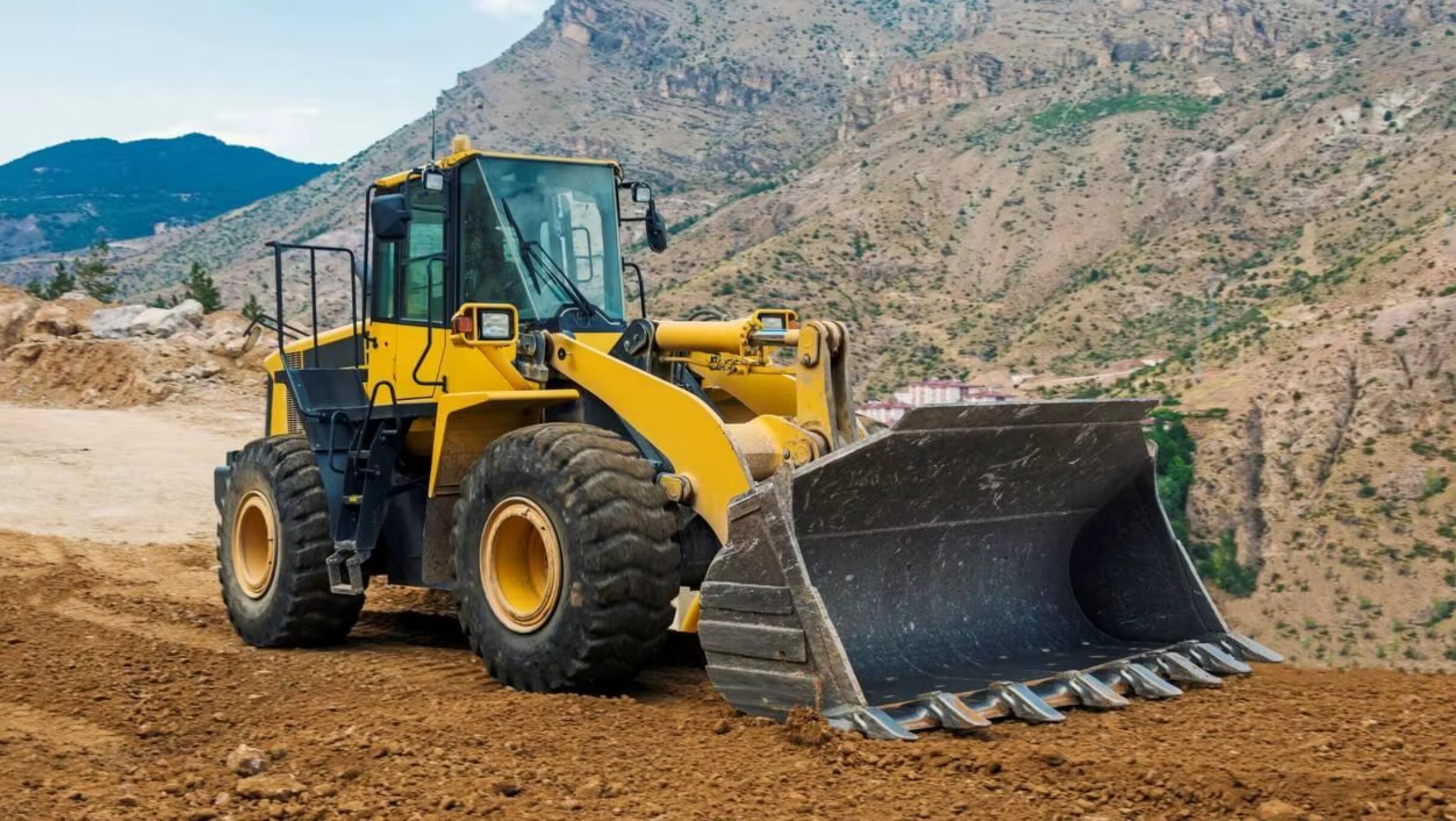
Რატომ ზრდის პრევენციული მოვლა ფულის დაზოგვას
Პრევენციულ მოვლას აქვს რამდენიმე ფინანსური უპირატესობა, რომელიც პირდაპირ აისახება თქვენს ბოლო შედეგზე. ქვემოთ მოცემულია ძირეული გზები, რომლითაც ის ეხმარება ფულის დაზოგვაში:
1. ამცირებს ძვირადღირებულ შეკეთებებს
Როდესაც უმეტესობა მოწყობილობის გამართვების შემთხვევაში შედის ძვირადღირებული შეკეთებები, როგორიცაა ნაწილების ჩანაცვლება, სპეციალური შრომა და სხვა შემთხვევებში საგრძელო ტრანსპორტირება ავარიული შეკეთებისთვის, პრევენციული შემოწმება ადრე ამჩნევს იმ ნაწილებს, როგორიცაა ჰიდრავლიკური მილები, რემები ან პატრონები, სანამ ისინი სრულიად არ გაიფუჭებიან. მომსახურების დროს გამოყენებული ნაწილის ჩანაცვლება ბევრად იაფია, ვიდრე მთელი სისტემის შეკეთება, რომელიც ზიანი მიეყენება გაოცების გამო.
2. შეამცირებს შეჩერების დროს
Შეჩერების დრო ერთ-ერთი უდიდესი დამალული ხარჯია სამშენ ინდუსტრიაში. როდესაც მოწყობილობა უცებ იშლება, წარმოება შეწყდება, ვადები ვერ არის დაცული და შრომის ღირებულება იზრდება პროგრესის გარეშე. განრიგით განსაზღვრული შემოწმება უზრუნველყოფს მოწყობილობის ეფექტურ მუშაობას და ამცირებს უცებ გამართვების რისკს. შესაძლებელია განრიგის გარეშე ან პროექტის გარეთ მოწყობილობის შემოწმების დაგეგმვა, რათა არ შეწყდეს სამუშაო პროცესი.
3. გააგრძელებს მოწყობილობის სიცოცხლის ხანგრძლივობას
Მძიმე ტექნიკა ხშირად ღირს ათასობით ან ათასობით ათასი დოლარი. მისი მოვლა, როგორიცაა ზეთის შეცვლა, ფილტრების ჩასხვება და სმინვა, ამცირებს მნიშვნელოვანი კომპონენტების გამოყენების შედეგად წარმოქმნილ დაზიანებას. თქვენი მოწყობილობის სიცოცხლის გაგრძელება შეიძლება გადადეს ხარჯობით მეტი შემცვლელობის დრო, რაც ამაღლებს თქვენი ინვესტიციების შესაბამის შემოსავალს.
4. აუმჯობესებს საწვავის ეფექტურობას
Არასათანადოდ მოვლილი მოწყობილობები მეტ საწვავს იხმარენ მაშინ, როდესაც ფილტრები დაბლოკილია, კომპონენტები არასწორად არის გამყარებული ან ძრავები ისვენება. პრევენციული მოვლა უზრუნველყოფს მოწყობილობის მაქსიმალურ ეფექტურობას, რაც ამცირებს საწვავის მოხმარებას. დროთა განმავლობაში ეს ეკონომია იზრდება, განსაკუთრებით მძიმე ტექნიკის შემთხვევაში, რომელიც ყოველდღიურად მუშაობს.
5. ამაღლებს უსაფრთხოებას
Გამართულები შეიძლება წარმოადგენდნენ უსაფრთხოების რისკს ოპერატორებისთვის და სიტის პერსონალისთვის, რაც იწვევს მძიმე შედეგებს, დაზიანებებს ან სასამართლო პროცესებს. ასეთი რისკები დროულად გამოივლინება რეგულარული შემოწმების შედეგად, რომლებიც აჩვენებენ პრობლემებს, როგორიცაა დაზიანებული სარქნელები, ჰიდრავლიკური სითხის გაჟონვა ან ელექტრო გამართულებები, რის შედეგადაც თავიდან იცავს შემთხვევებს და დამატებით ხარჯებს სამუშაო ადგილზე.
Პრევენციული შემოწმების პროგრამის ძირეული კომპონენტები
Ეფექტური პრევენციული შემოწმების პროგრამისთვის საჭიროა დაგეგმვა და გადამყოფნობა. ქვემოთ მოცემულია ეტაპები, რომლებიც საჭიროა ეფექტური გეგმის შესამუშავებლად და შესანარჩუნებლად:
1. შექმენით შემოწმების გრაფიკი
Შემოწმების გრაფიკის შექმნა უნდა მოხდეს მწარმობლის მიერ მიწოდებული ინსტრუქციის, მოწყობილობის გამოყენების სიხშირის და გამოყენების პირობების მიხედვით. უმეტეს შემთხვევაში მოწყობილობების შემოწმება სჭირდება ყოველდღიურად, ყოველკვირეულად, ყოველთვიურად და ყოველწლიურად. მაგალითად:
Ყოველდღიურად: შეამოწმეთ სითხის დონე (ზეთი, სითხე გაგრილებისთვის, ჰიდრავლიკური სითხე), გაჟონვის ტესტირება და გაწმინდეთ ნარჩენები კრიტიკული ნაწილებიდან.
Ყოველკვირეულად: შეამოწმეთ გუმბათები ან გარბანი, გაასველეთ მოძრავი ნაწილები და შეამოწმეთ დაუსველებელი ბოლტები ან შეერთებები.
Ყოველთვიურად/კვარტალობრივად: შეცვალეთ ფილტრები, შეამოწმეთ საჭის და ხრუხელები და განახორციელეთ ძრავისა და ჰიდრავლიკური სისტემების სიღრმისეული შემოწმება.
Წელიწადში ერთხელ: განახორციელეთ სრული შემოწმება, ელექტრო სისტემების ტესტირება, სენსორების თავიდან კალიბრაცია და მოძველებული ნაწილების ჩანაცვლება.
Გამოიყენეთ კალენდარი ან კომპიუტერიზებული შენარჩუნების თავისუფლების სისტემა, რათა დარწმუნდეთ ამოცანების დროულად შესრულებაში.
2. ოპერატორების მომზადება
Უზრუნველყავით ოპერატორები იმ მომზადებით, რომ შეძლონ ყოველდღიური შემოწმება და პრობლემების დროულად შესახებ შეტყობინება. მომზადება შეიძლება შეიცავდეს იმის შესწავლას, თუ როგორ განასხვავონ ცვეთის გაფრთხილების ნიშნები, მაგალითად, უჩვეულო ხმები, რხევები ან სიმძლავრის დაკარგვა. კარგად მომზადებულმა ოპერატორებმა შეიძლება პრობლემები ადრე გამოავლინონ, სანამ მცირე პრობლემები დიდ პრობლემებად არ გადაიზარდება.
3. გამოიყენეთ ხარისხიანი ნაწილები და სითხეები
Ყოველთვის იყენებდით სითხეებსა და ნაწილებს მაღალი ან OEM სტანდარტებზე მაღალი ხარისხით. იაფი ალტერნატივები მოკლე ვადით იაფი იქნება, მაგრამ შეიძლება გამოიწვიოს მეტი ცვეთა ან ზიანი, რაც გააუქმებს ნებისმიერ დანაზოგს. ხარისხში ინვესტიციები გამოიხატება საიმედოობაში და მუშაობის ხანგრძლივობაში.
4. თანამშრომლობა კვალიფიციურ ტექნიკურ სპეციალისტებთან
Ძლიერი მომსახურების დროს, მაგალითად ძრავის ან ჰიდრავლიკური სისტემის შეკეთებისას, გამოიყენეთ სამშენ მანქანებზე სპეციალიზებული სერტიფიცირებული ტექნიკური სპეციალისტები. მათი ტექნიკური გამოცდილება უზრუნველყოფს სწორად შესრულებულ სამუშაოს და აღმოფხვრის ხარჯიანი გადატვირთვების რისკს.
5. ოპერაციული პირობების მონიტორინგი
Სამშენ მანქანები მუშაობს სხვადასხვა გარემოში, მშრალ უდაბნოებიდან დაწყებული ჭაობებით დამთავრებული. სიმკაცრით დატვირთული გარემო აჩქარებს მანქანის დამსხვრევას, ამიტომ შეესაბამებინეთ მომსახურების გრაფიკი. მაგალითად, მტვრიან გარემოში გამოყენებულ მანქანებს შეიძლება დაეხმაროს ჰაერის ფილტრების უფრო ხშირი შეცვლა, ხოლო წყალში გამოყენებულ მანქანებს საჭირო აქვს განსაკუთრებული ყურადღება რკინის კოროზიის თავიდან ასაცილებლად.
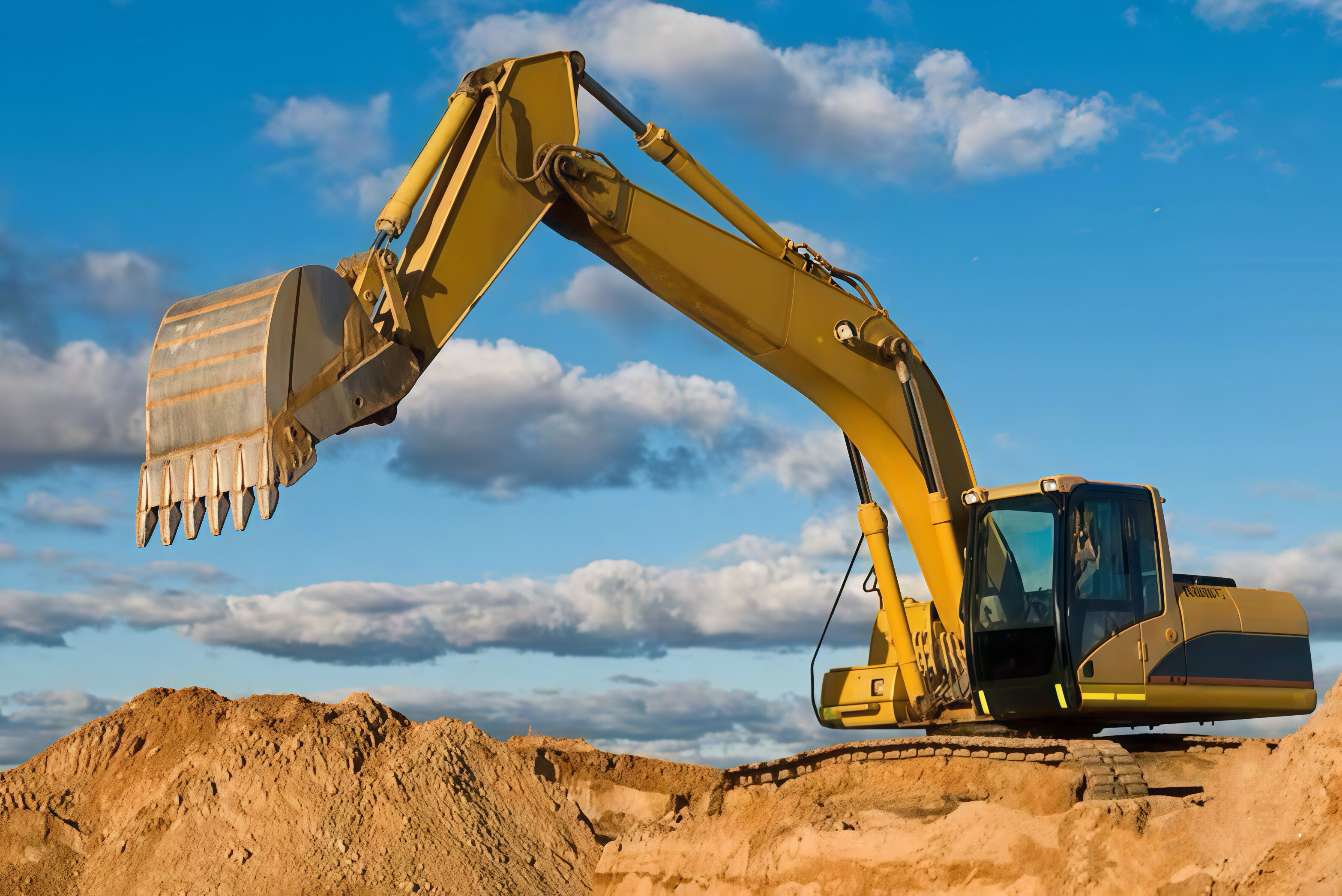
Პრაქტიკული რჩევები განხორციელებისთვის
Რომ პრევენციული მომსახურება მაქსიმალურად ეფექტურად გამოიყენოთ, გაითვალისწინეთ შემდეგი პრაქტიკული რჩევები:
Მიუდრით უპირატესობა იმ მანქანებს, რომლებიც ხშირად გამოიყენება: მანქანები, რომლებიც ყოველდღიურად ან რთულ პირობებში მუშაობს, უნდა იყოს უფრო ხშირად შემოწმებული და მომსახურებული.
Გამოიყენეთ ტექნოლოგია: მანქანის შესრულების რეალურ დროში დასაკონტროლებლად გამოიყენეთ ტელემატიკა ან მოწყობილობების მონიტორინგის სისტემები. ეს სისტემები შეგატყობინებთ ზედმეტი გახურების ან სითხის დაბალი დონის მსგავს პრობლემებზე დაზიანების მოხდენამდე.
Დაგეგმეთ სეზონური საჭიროებები: მიარგეთ მოვლის გრაფიკი სეზონურ საჭიროებებს. მაგალითად, მოამზადეთ მოწყობილობები ცხელი ან ცივი ამინდის პირობებისთვის, რათა ისინი ეფექტურად იმუშაოს პიკური პროექტების სეზონების განმავლობაში.
Დააგეგმეთ მოვლის ბიუჯეტი: ჩართეთ პრევენციული მოვლის ხარჯები თქვენს პროექტთა ბიუჯეტში. მიუხედავად იმისა, რომ ეს ითხოვს წინასწარ ხარჯებს, გრძელვადიანი სარგებელი ბევრად აღემატება საწყის ხარჯებს.
Ჩატარეთ რეგულარული აუდიტები: პერიოდულად მიმოიხილეთ თქვენი მოვლის პროგრამა, რათა დარწმუნდეთ მის ეფექტურობაში. დაანალიზეთ შეჩერებები, შეკეთების ხარჯები და მოწყობილობების შესრულება, რათა განსაზღვროთ გაუმჯობესების სფეროები.
Გავრცელებული შეცდომები, რომელთა თავიდან აცილება
Მიუხედავად იმისა, რომ პრევენციული მოვლა მარტივია, ზოგიერთი შეცდომა შეიძლება შეამციროს მისი ეფექტურობა:
Გამოტოვებული განრიგის მიხედვით შემოწმება: ერთი განრიგის მიხედვით შემოწმების გამოტოვებაც კი შეიძლება გამოუჩინარე პრობლემების გამო მომდევნო დიდი პრობლემების გამომწვევი გახდეს. მკაცრად აღიქვით განრიგი.
Ოპერატორის შეფასების უგულებელყოფა: ოპერატორებს აქვთ უფრო მაღალი შანსი, რომ შეამჩნიონ მოწყობილობის მუშაობაში ცვლილება სხვა ნებისმიერზე ადრე. მათი შეფასების უგულებელყოფა შეიძლება გაართულოს მნიშვნელოვანი რემონტის პროცესი.
Პატარა პრობლემების უგულებელყოფა: მცირე დეფექტები, როგორიცაა მცირე ჟანგი ან დაშვებული ბოლტი, უგულებელყოფის შემთხვევაში მომდევნო სერიოზულ დაზიანებამდე შეიძლება მივიდეს. ყველა პრობლემა პრიორიტეტულად უნდა გადაწყდეს.
Ნაწილებთან დაკავშირებული შეზღუდვების გადალახვა: ხარჯების შესამსუბუქებლად დაბალხარისხიანი ნაწილების ან სითხეების გამოყენება შეიძლება შეამციროს მოწყობილობის მუშაობის ეფექტიანობა და გამოიწვიოს ძვირადღირებული რემონტები.
Დასკვნა
Პრევენციული შემოწმება მშენებლობის მოწყობილობების მართვაში კარგი ფულის დანაზოგია. ის შეიძლება შეამციროს რემონტის ხარჯები, შეამციროს შეჩერების დრო, გააგრძელოს მოწყობილობის სამუშაო ვადა და გაუმჯობინოს უსაფრთხოება და პროდუქტიულობა. კარგი პრევენციული შემოწმების პროგრამისთვის საჭიროა დაგეგმვა, მომზადება და მუდმივობა, თუმცა ფინანსურად ის სრულიად აღი justified.
Მიუხედავად იმისა, რამდენი მანქანა გაქვთ, პრევენციული შენარჩუნების პრიორიტეტულობა უზრუნველყოფს თქვენი მოწყობილობების საიმედოობას, თქვენი პროექტების დროულ შესრულებას და თანხების ბალანსს. დაიწყეთ დღეს, შექმენით შენარჩუნების გრაფიკი, მოამზადეთ თქვენი გუნდი და ინვესტირება განახორციელეთ თქვენი საშენი მანქანების ხარისხიან მოვლაში — ეს ინვესტიცია წლიდან წლამდე თავის ღირებულებას იხდის.
Რეკომენდებული პროდუქტები
 Გამარჯვებული ახალიები
Გამარჯვებული ახალიები
-
„წყალის შენობელი“ 200 მეტრიანი პირდაპირი ცირკულაციის წყალის სხვაგამოსავლეთი ჩამოსვლის მაशინები დასავიდებით მოხვედრილია უზბეკისტანში
2025-03-28
-
Ბულდოზერის ტრანსპორტირების მითითებები: საუკეთესო პრაქტიკები, უსაფრთხოების რჩევები და ღირებულების ფაქტორები
2025-12-15
-
Საშენი ტექნიკის ტრანსპორტირების სრული გზამკვლევი: მეთოდები, ხარჯები და რჩევები
2025-12-12
-
Როგორ მუშაობს ბულდოზერი: ძირეული ამოცანები, ტექნიკა და გამოყენება
2025-12-11
-
Უმსხვილესი ექსკავატორის შესაძლებლობების გაცნობა მთელი მსოფლიოს მასშტაბით
2025-12-10
-
Აუცილებელი ბულდოზერის მოწყობილობა: კომპონენტები, დამატებითი ინვენტარი და გამოყენება
2025-12-09



